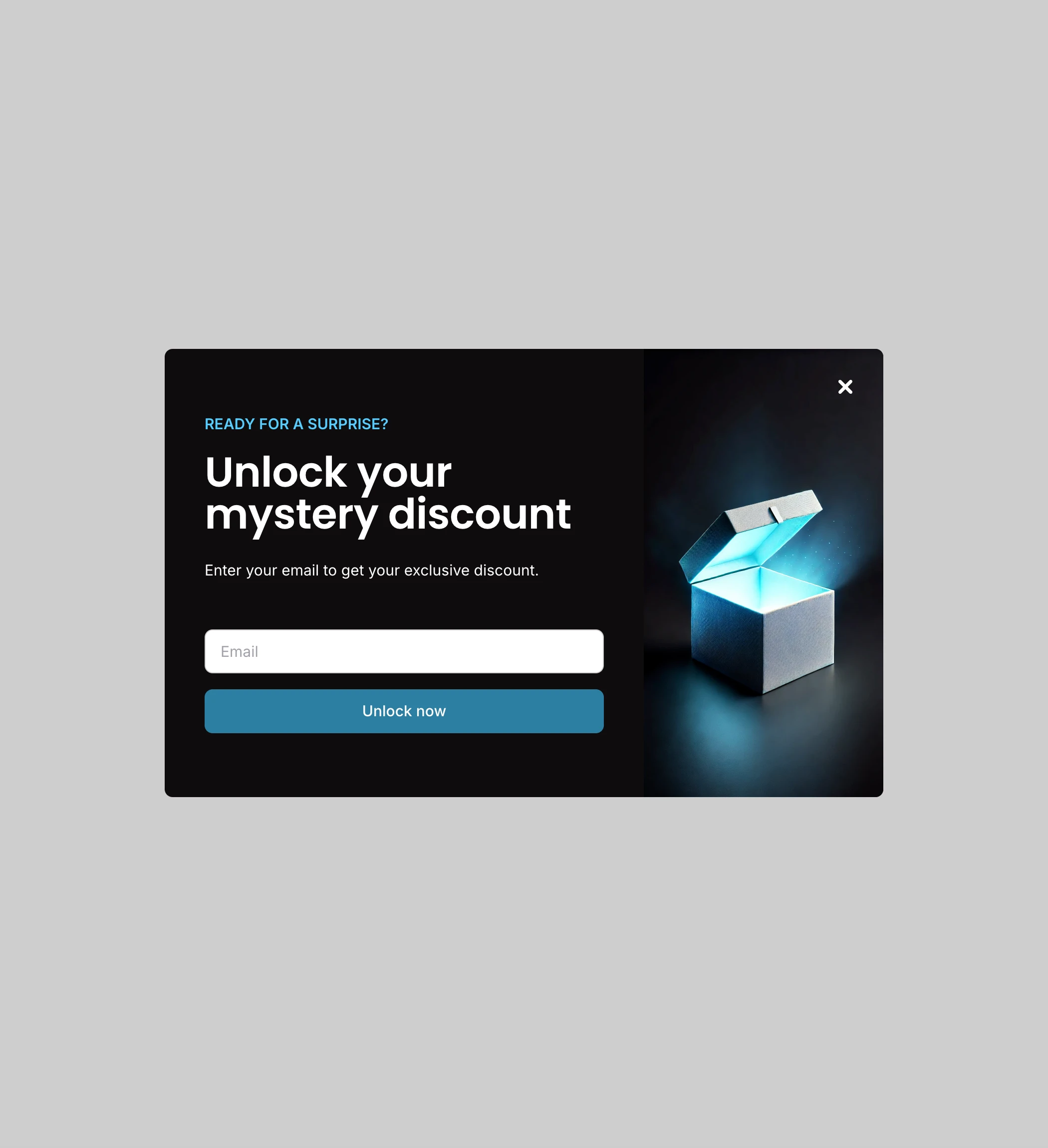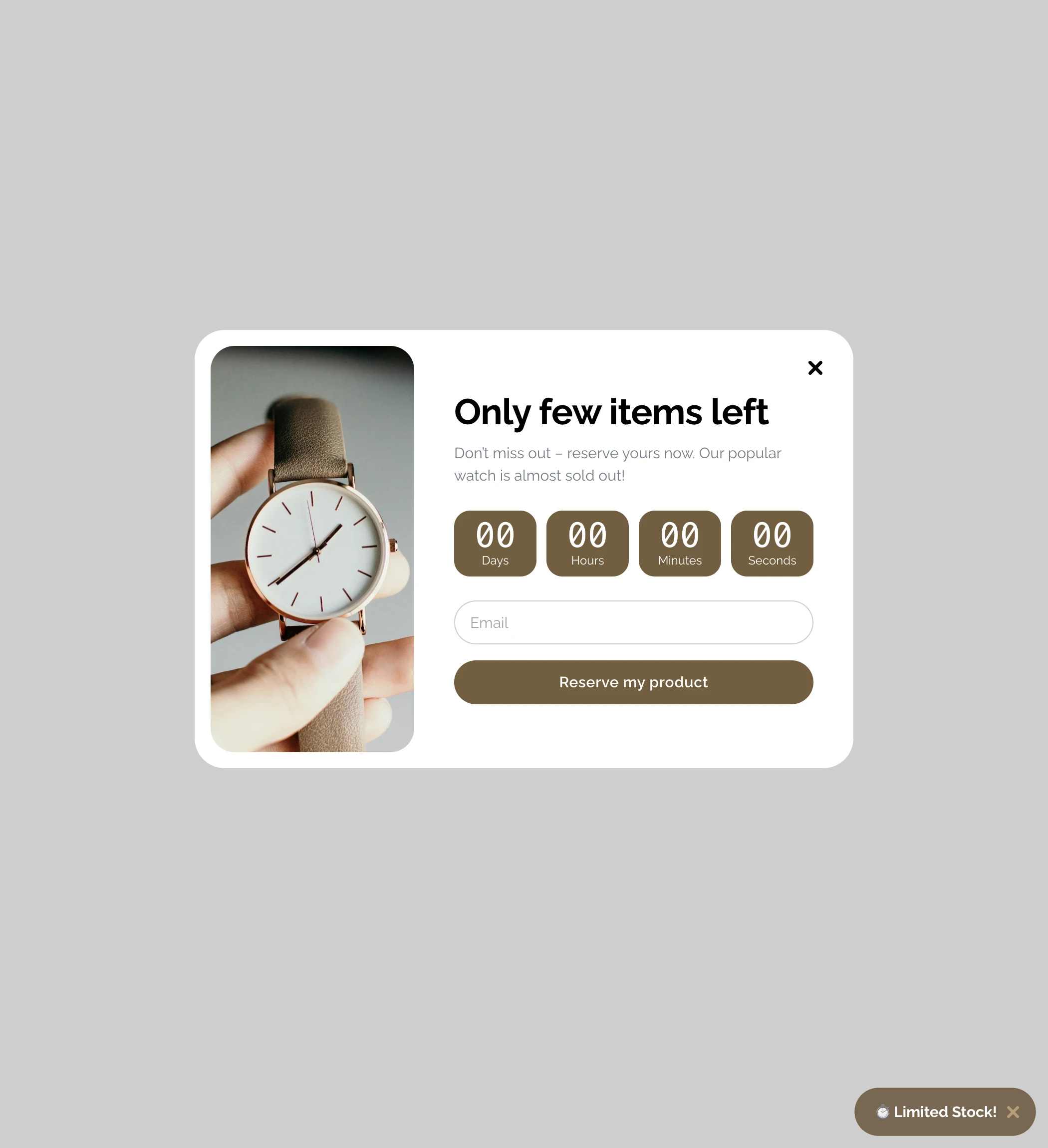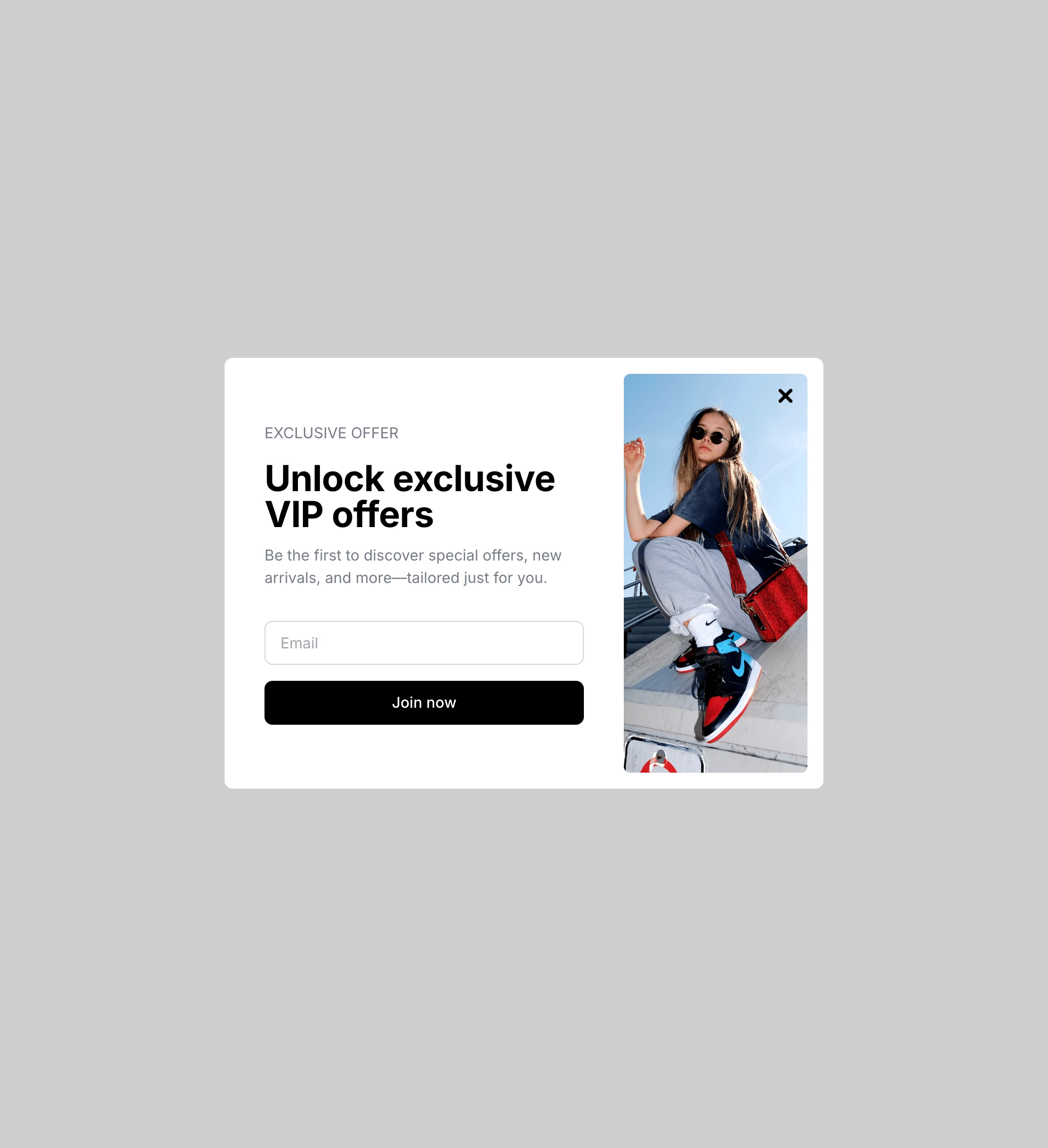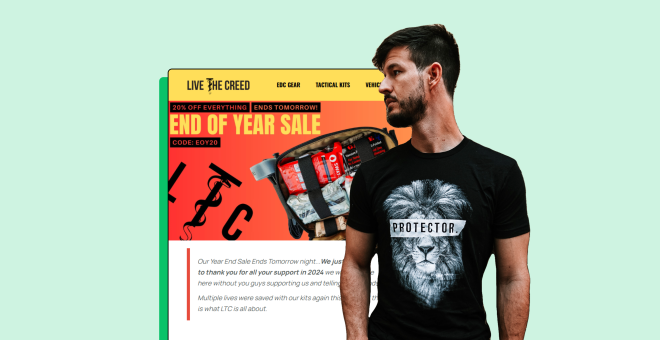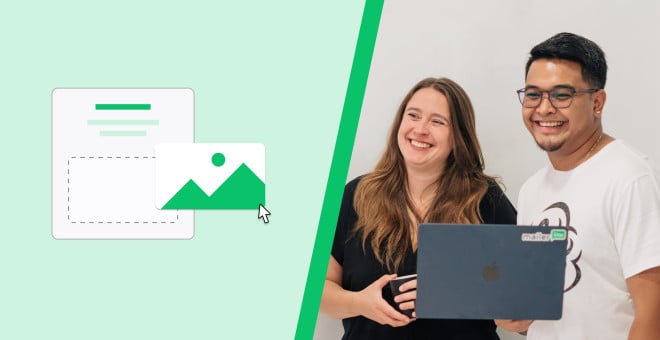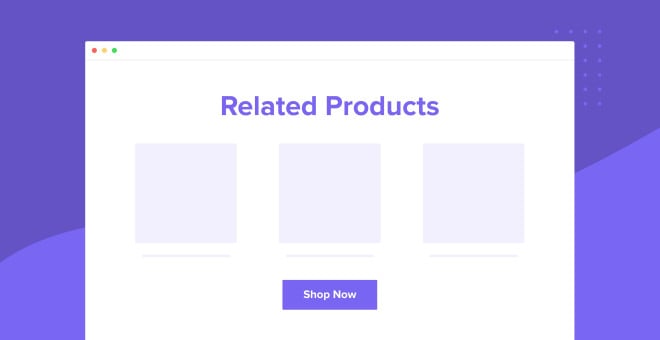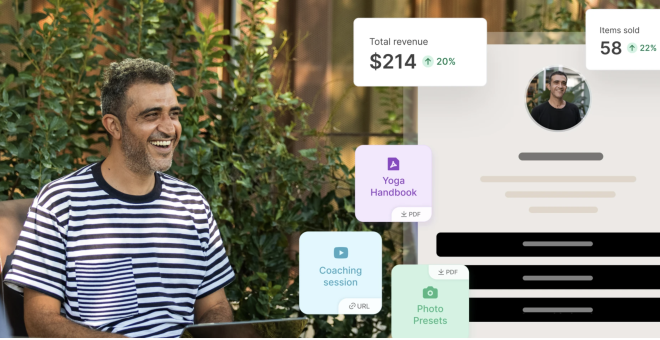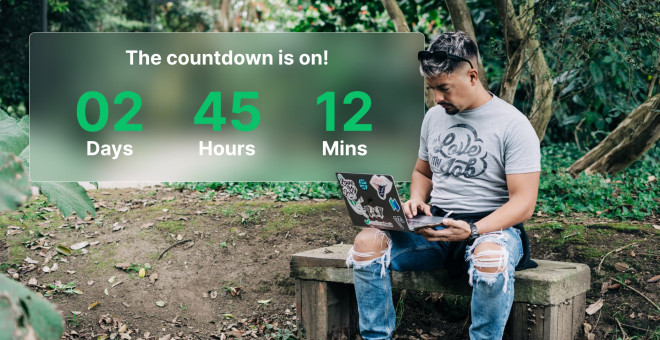7 “non-pushy” upselling techniques to sell everything except your soul
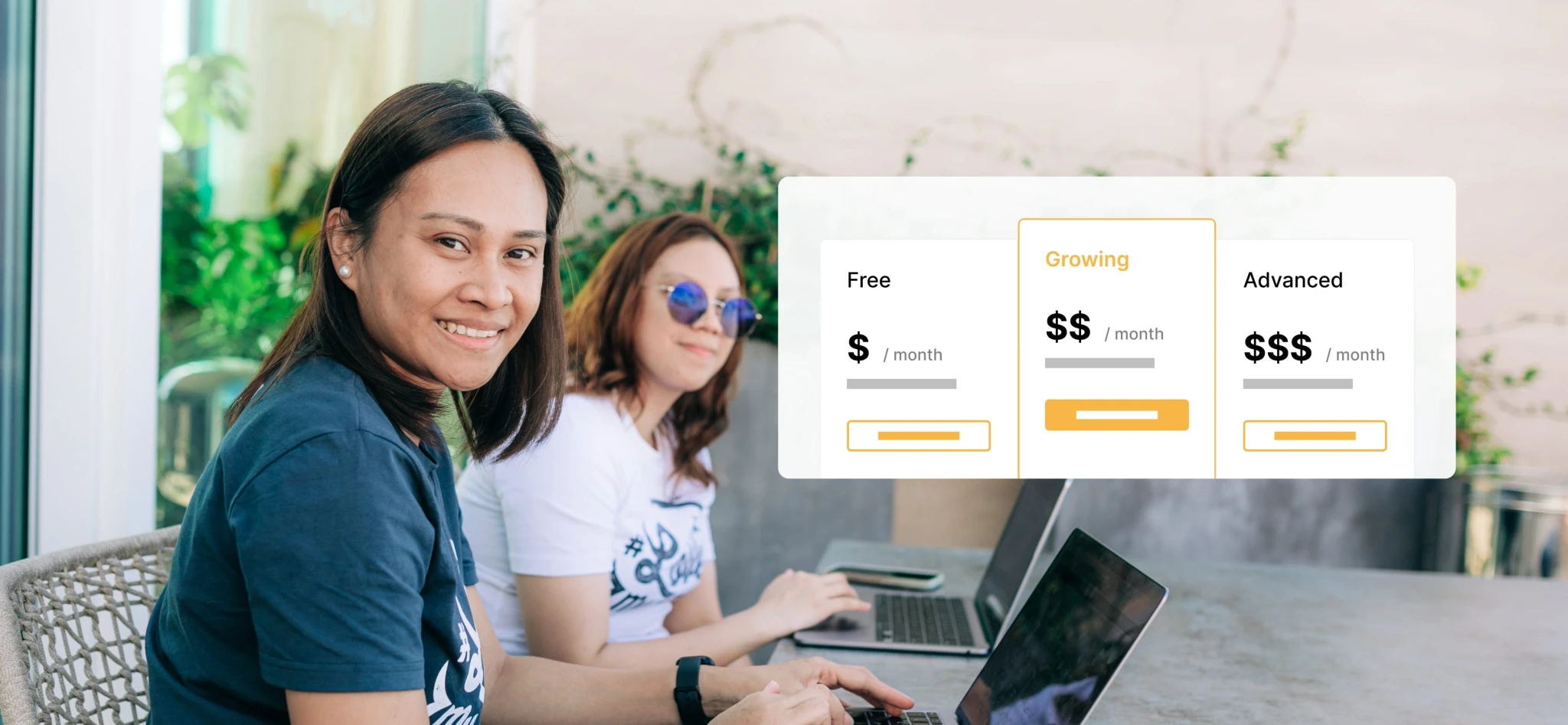 MailerLite Customer Support team members Maria and Denise.
MailerLite Customer Support team members Maria and Denise.
Upselling is a delicate task. You want to encourage customers to get the most out of your products or services (and increase your revenue), but you don’t want to come off like a pushy car salesperson.
The simple act of selling isn’t what makes for a negative experience—after all, people only walk into car dealerships if they need a car. It’s the upselling techniques they use. A good car salesperson will find out the needs of their customers and only upsell based on what will provide the most value.
When done correctly, upselling can lead to increased profits and happier customers.
In this article, we’ll give you some upselling tactics and best practices you can easily implement into your marketing strategy. We will also provide some examples so that you can decide which technique(s) works best for you.
What is upselling?
Upselling is a sales technique in which a retailer or marketer encourages a customer to spend more money by promoting upgrades, add-ons, or a more expensive version of a product to increase the average order value.
I know what you’re thinking. It sounds like pushy car salesperson territory when you put it like that. But it’s actually about creating a win-win situation where you and your customers both walk away happy.
Upselling is about offering something better: To replace the item or service they’ve already chosen with a more expensive item that provides a whole lot more value.
Upselling vs. cross-selling
Both upselling and cross-selling are strategies that maximize revenue and enhance customer satisfaction by providing additional value. They both fall under “suggestive selling” but they are slightly different.
Upselling involves persuading a customer to purchase a more expensive version or additional features for the product they're considering, while cross-selling involves offering complementary or related products or services, encouraging them to broaden their purchase scope.

More often than not, upselling happens during the initial sales process, while the customer is making their decision and before they’ve hit check out. On the other hand, cross-selling happens during and after the sale is made. If you’ve ever made a purchase on Amazon you’ll be familiar with the “Recommended products” section of their post-sale emails.
Benefits and disadvantages of upselling
Upselling can result in high returns but it also carries some risk. Make one wrong move and you can turn a potential customer off forever. But get the balance just right and upselling can be effective for increasing revenue. Understanding both the advantages and disadvantages is key to a successful upselling strategy.
| Advantages | Disadvantages |
|---|---|
| Increased revenue: Customers spend more money, resulting in increased sales revenue, average order value, and customer lifetime value. Studies say that upselling brings in 21% of company revenue. | Risk of harming customer satisfaction and experience: Pushy or irrelevant upsells can harm the customer experience and alienate the customer. |
| Enhanced customer experience: When done right, upselling provides extra value by fully meeting the customer’s needs or preferences, increasing overall satisfaction. | Risk of harming brand perception: Pushy upselling techniques can leave a bad impression, leading customers to avoid your brand, or even worse, share negative reviews. |
| Potential for higher profit margins: More expensive or larger purchases typically lead to a higher profit margin for the business. | Risk of overwhelming customers: If you’re too aggressive or present too many upsell options, you could complicate the buying process and overwhelm the customer. |
Types of upsells
1. Premium upgrades
These are premium versions of a product or service with varying levels of quality or detail. Going back to cars as an example, most models don’t have just one option. They have various grades, each one with more features and premium upgrades.
2. Extended warranty
Ever purchased a pricey electronic and been asked if you’d like to extend the warranty from 1 year to 2 years? That was upselling!
3. Customization
Customization involves allowing the customer to modify the product’s materials, appearance or design. A good example of this is when brands allow you to add custom engraving to leather products such as bags.
4. Quantity
You can upsell by convincing the customer to purchase multiples of the product. This type of upselling is most effective when purchasing multiples provides better value for the customer. The customer will pay more for the entire purchase, but less per item.
5. Subscriptions
Subscriptions work well for products or services that are purchased on a regular basis. Some examples are protein powder, shampoo, and skincare products. You can lock in a long-term customer and improve their experience by upselling a subscription that’s more convenient for them and better value, as subscriptions usually come with cost savings.
How to create an upselling strategy
Devising an upselling sales strategy that works involves understanding your customers’ needs, identifying the right products or services to upsell, and using the best techniques to encourage the purchase.
Step 1: Identify customers’ needs and the upselling opportunity
Create customer personas to understand more about your customers’ demographics, habits, pain points, and motivations. Analyze your customer data to gain insights into purchasing behavior, preferences, and buying patterns. Then, bring all of this together to determine which products or services complement or enhance what customers are already purchasing. Focus on providing additional value and fulfilling customers’ needs. If you’re missing out on key customer information, consider conducting a survey to flesh out your buyer personas.
Step 2: Train your customer support and sales staff
If you sell exclusively online, there may not be any in-person selling going on. However, there may be instances where customers contact your support or sales team for help or advice about a potential purchase. Train your team about the different types of upsells you have available, how to identify which are right for customers, and how to upsell without being overbearing.
Step 3: Update and optimize product pages
Make sure that any upsells are clearly visible and be transparent about the extra costs associated with them. Let customers know what their options are, and highlight the key benefits of purchasing the upsell product or option. Use persuasive copy, high-quality images, and clear CTAs (Calls-To-Action).
Step 4: Incorporate personalized upselling offers into your email marketing
Use dynamic content and segmentation to tailor e-commerce email marketing campaigns based on customers’ past purchases. This works particularly well for products that are regularly purchased.
Step 5: Optimize the checkout process
Brick-and-mortar stores place attractive, useful and easy-to-sell items around their checkout area because they know that many customers will be enticed. They’re already on their way to make a purchase, so may be tempted to pick up something extra. The same applies here. Providing easy, one-click upsell options at checkout is a great way to get those last-second purchases in, and an effective way to convert customers who are on the fence about upgrades or add-ons.
Step 6: Monitor performance metrics
You’ll want to know if your upsell strategy and techniques are working and where there is room for improvement, so it’s important to keep track of relevant KPIs (Key Performance Indicators). Monitor upsell conversion rates, average order value, customer lifetime value, and revenue generated from upselling. Keep testing and monitoring techniques to optimize performance.
7 effective “non-pushy” upselling techniques
There are a few different techniques you can use when upselling to both new and existing customers. Which technique(s) you add to your upsell strategy will ultimately depend on your product, your customer, and the situation.
1. Make it easy to say “yes”
A successful upsell strategy makes it as easy as possible for people to say “yes”. You can do so by keeping options limited—just 1-3 offers that are clearly superior to the original product. And make sure your offers are framed in a way that highlights the benefits and value to the customer.
The easier you make it for them to say yes, the more likely they are to take you up on your offer.
Apple uses a simple upsell strategy that makes it super-easy to say “yes.” When you search for their latest iPhone model, iPhone 17 Pro, on their website, you can immediately compare it with the previous models and understand the benefits of upgrading to the latest model.
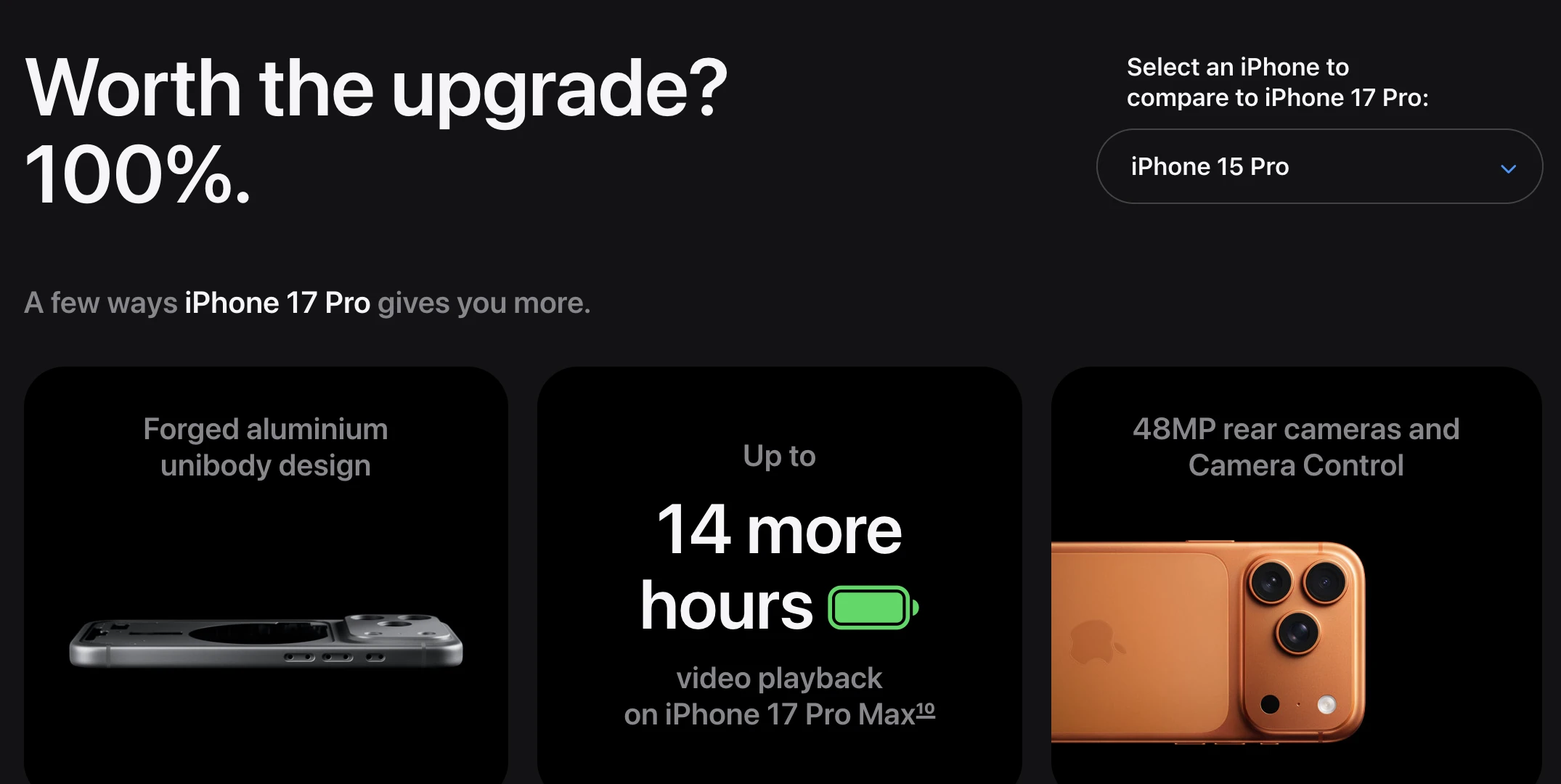
2. Use a free shipping indicator
Free shipping bars or indicators let customers know when the items they’ve added to their cart have reached the free shipping threshold. They also let customers know how much more they need to spend to get free shipping if they haven’t reached it already.
You can use free shipping indicators anywhere on your website, but they are most commonly placed in the shopping cart or checkout. It’s also a good idea to let people know how much shipping will cost if they don’t reach the free shipping amount. If shipping costs the same or more than the remaining amount, in many cases, people will find a similarly priced item and add it to their cart rather than pay the shipping costs.
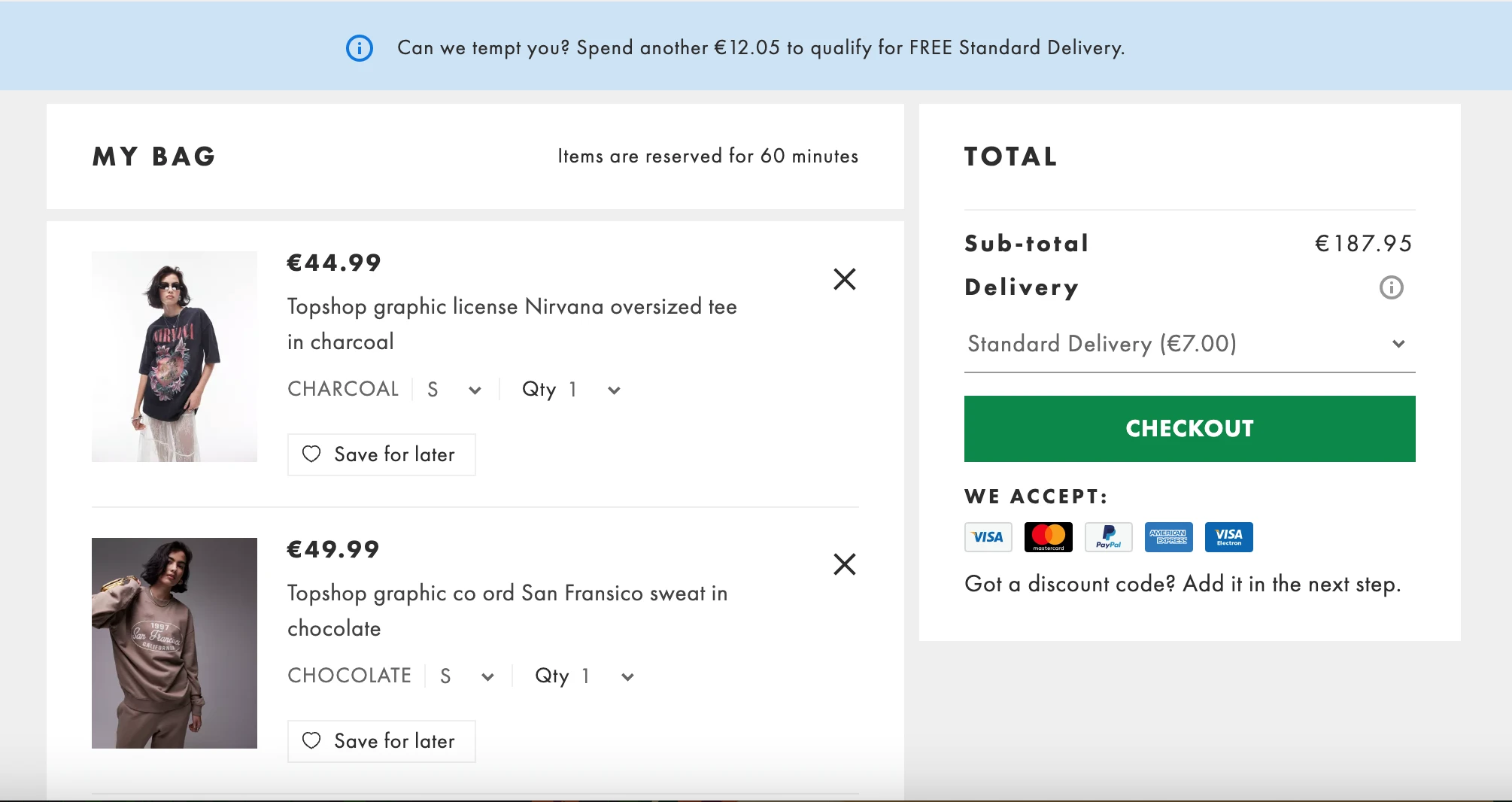
3. Use the power of three
The power of three is a principle that suggests things that come in threes are inherently more persuasive than other numbers. When you’re upselling, present your customer with three different offers. This will give them a greater sense of choice while still keeping the decision-making process simple.
The power of three pairs well with another sales tactic based on psychology known as “the decoy effect”: When people are more likely to choose one option over another if there is a third, less desirable option.
The decoy effect requires three offers:
The original product
The goal product (what you want people to buy)
The decoy
The most popular example of the decoy effect is movie theater popcorn. There is a huge jump in price from a small to a medium popcorn, but a large is only slightly more expensive than a medium.
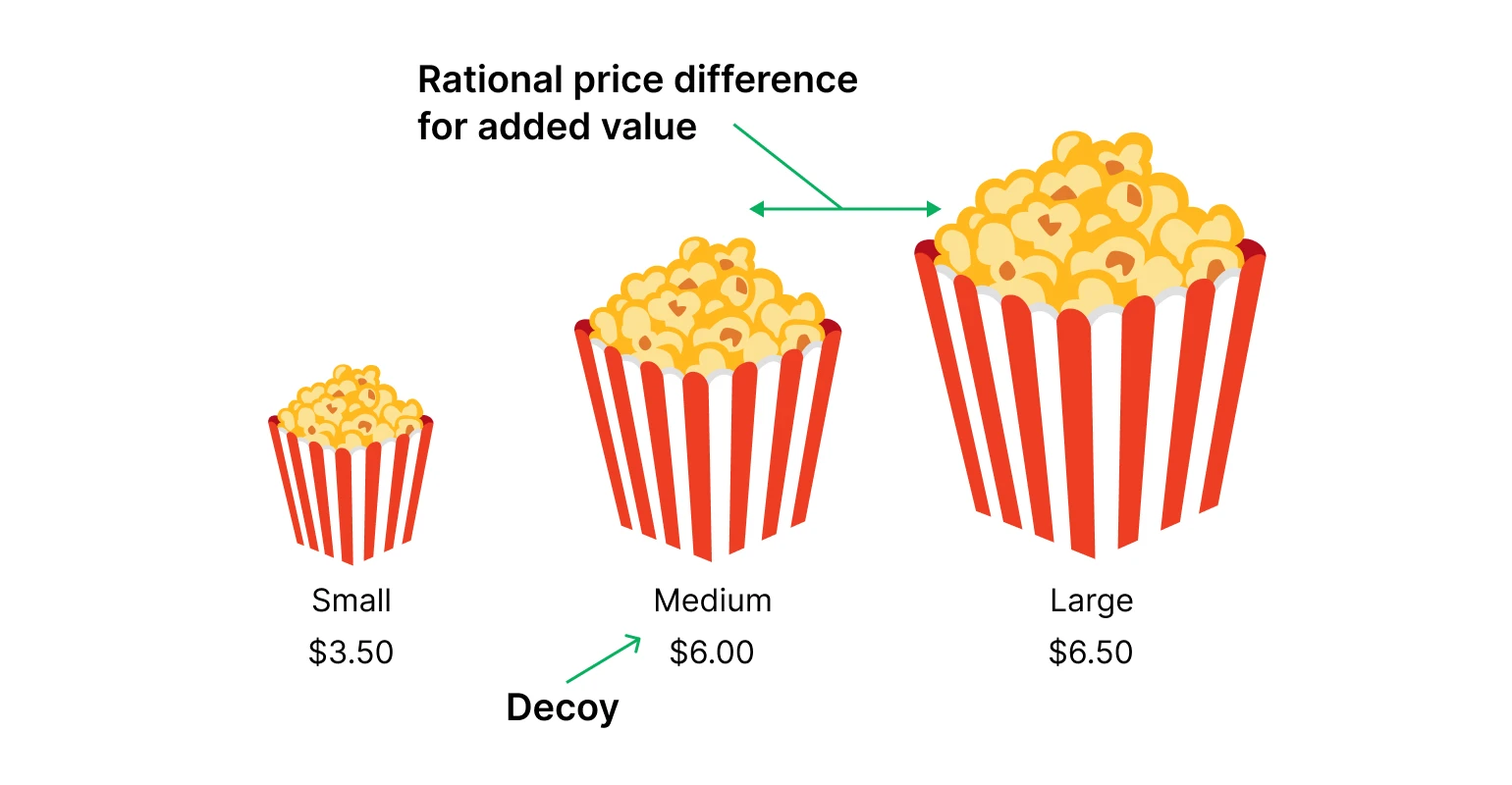
In this case, the medium popcorn is the decoy. Because the price difference between a medium and a large is a mere 50 cents, it’s easy to justify the upgrade.
4. Bundle products or services
Another way to make an upsell more appealing is to bundle it with other products or services. Take a collection of related products, or products that work together, and offer it as a package before they reach the checkout page.
This is an excellent way to bump up your pricing margins by increasing the perceived value of your upsell. Think “buy 2 get 1 free”.
The perfect example of a bundled upsell is “The Disney Bundle”.
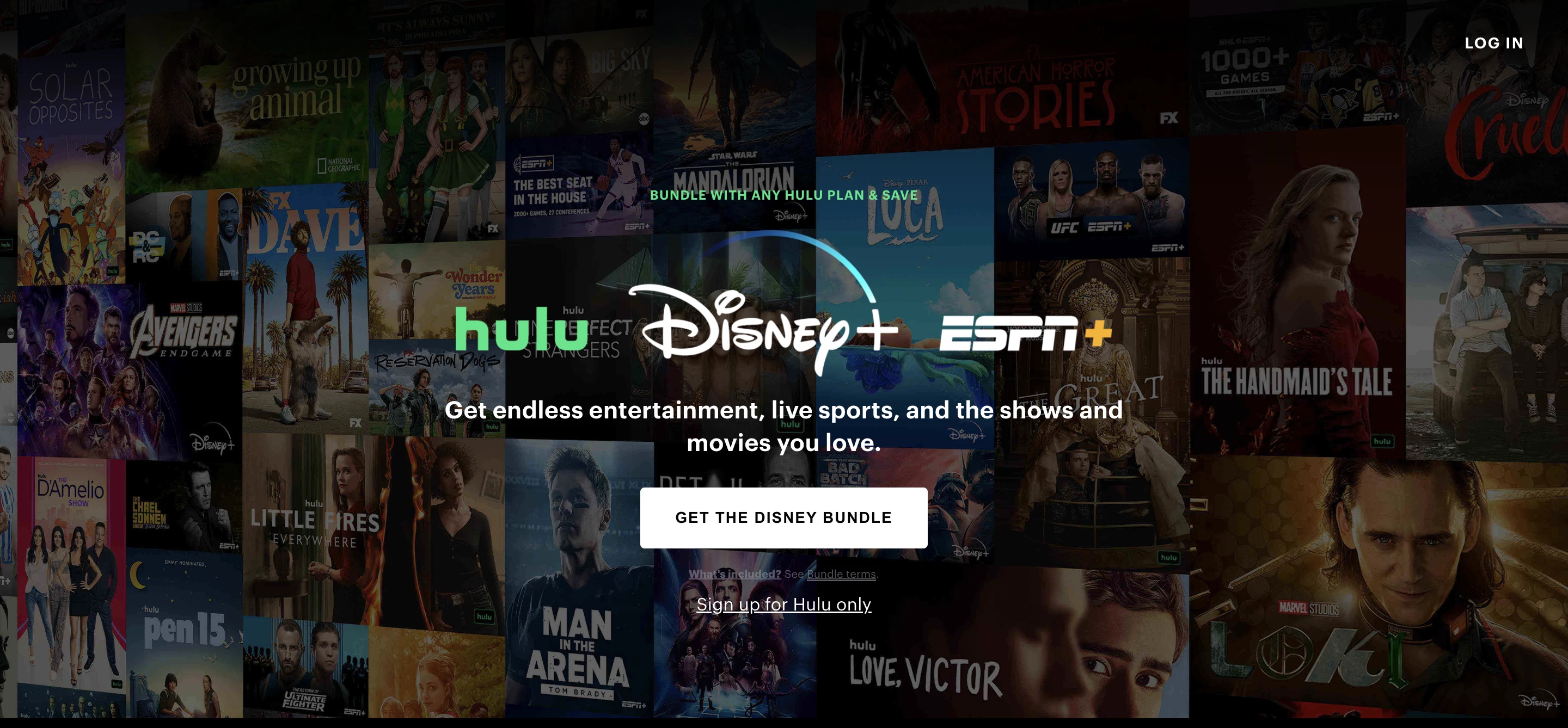
Whenever new customers go to purchase one of the streaming services above, they’re immediately offered “The Disney Bundle”.
The bundle is $14.99 a month. 75%-100% more than a stand-alone streaming service.
But when you take into account the total value of the bundle (around $27 a month), you realize it’s actually a pretty good deal!
Good places to upsell a bundle include:
The cart page
A product page
A landing page
In an abandoned cart email
5. Upsell to existing customers
Your existing customers might just be the best target audience for your upsells because they’ve already purchased from you and know what to expect. And according to Hubspot, 72% of revenue comes from existing customers.
What’s more, you have a wealth of data about their purchase preferences and habits at your fingertips. You can use this to tailor upsell offers to their specific needs and behavior, leading to a higher chance of conversion—especially if the offer provides value.
For example, let's say you have a customer who purchases protein powder every month. You can send a personalized email to them or add a notification to your checkout to encourage them to purchase in bulk with better cost-per-unit pricing or upgrade to try a premium protein powder instead.
6. Customer service upsells
Your support channels are where customers go to ask for help and share their problems and challenges. If you have a solution to these issues in the form of an upsell, it’s the perfect opportunity to encourage a purchase!
The caveat here is that you need to approach the upsell with compassion and sensitivity. Customers who contact support may already be frustrated or disillusioned with your brand if they have an issue with your product or service. Trying for an upsell in the wrong way or in the wrong situation could add salt to the wound, leaving the customer even more discontent.
The key is to understand various customer pain points and challenges and identify where upsells can be appropriately applied.
7. Create supporting content for your products and highlight upsells
Educational content in the form of articles, guides and videos is great for nurturing customer relationships and increasing satisfaction. It also provides ample opportunities for highlighting better ways to use your product, maintain it, and extend its lifespan while highlighting your upsells. It’s kind of like creating more natural, organic ads.
Cosmetics retailers, Karla Cosmetics, frequently showcases how their products look and work alongside complementary products. In this example, they show one of their newest pigments and highlight how it looks with different bases, which they also sell.
How MailerLite tools can support your upselling strategy
MailerLite offers a whole range of features that will help you take advantage of upsell opportunities including promotion pop-ups, email campaigns, automation, websites, landing pages, and digital product blocks.
Promotion pop-ups
Strategically place promotion pop-ups on specific web pages (like category or product pages) to upsell based on what the visitor is looking at.
You control the design and set the behavior of the pop-up. So you can set when, where and for how long each promotion runs for.
For example: If a customer visits your online store looking for an e-book, you can create a promotion pop-up that appears when they’ve scrolled to the end of the product page, offering an exclusive bundle containing the e-book + an audiobook at a discounted price. You can even add urgency by making it a limited-time offer.
There are 11 promotion pop-up templates each designed to help you achieve a specific goal. All of these templates are customizable. These 3 are the best for upselling:
1. Mystery sale pop-up
If you have a special event or offer of the day, the “Mystery sale pop-up” is a great way to create intrigue, urgency and grab your visitor’s attention.
Use this pop-up to add an exclusive one-day discount on a premium product or subscription.
2. Limited-time pop-up
Use the “Limited-time pop-up” when you’re running special offers that have an expiration date. Adding the countdown timer is an excellent device to communicate urgency.
3. Product pop-up
Let your landing page or website visitors know about a premium alternative, or promote a bundle when a customer is viewing a specific page with the “Product pop-up” template.
Newsletters
Email campaigns are the perfect way to personalize your upsell offers. Paired with interest groups and/or subscriber segmentation, you can send relevant, targeted offers to specific groups of customers.
Here’s a great example from a MailerLite customer, Live The Creed.
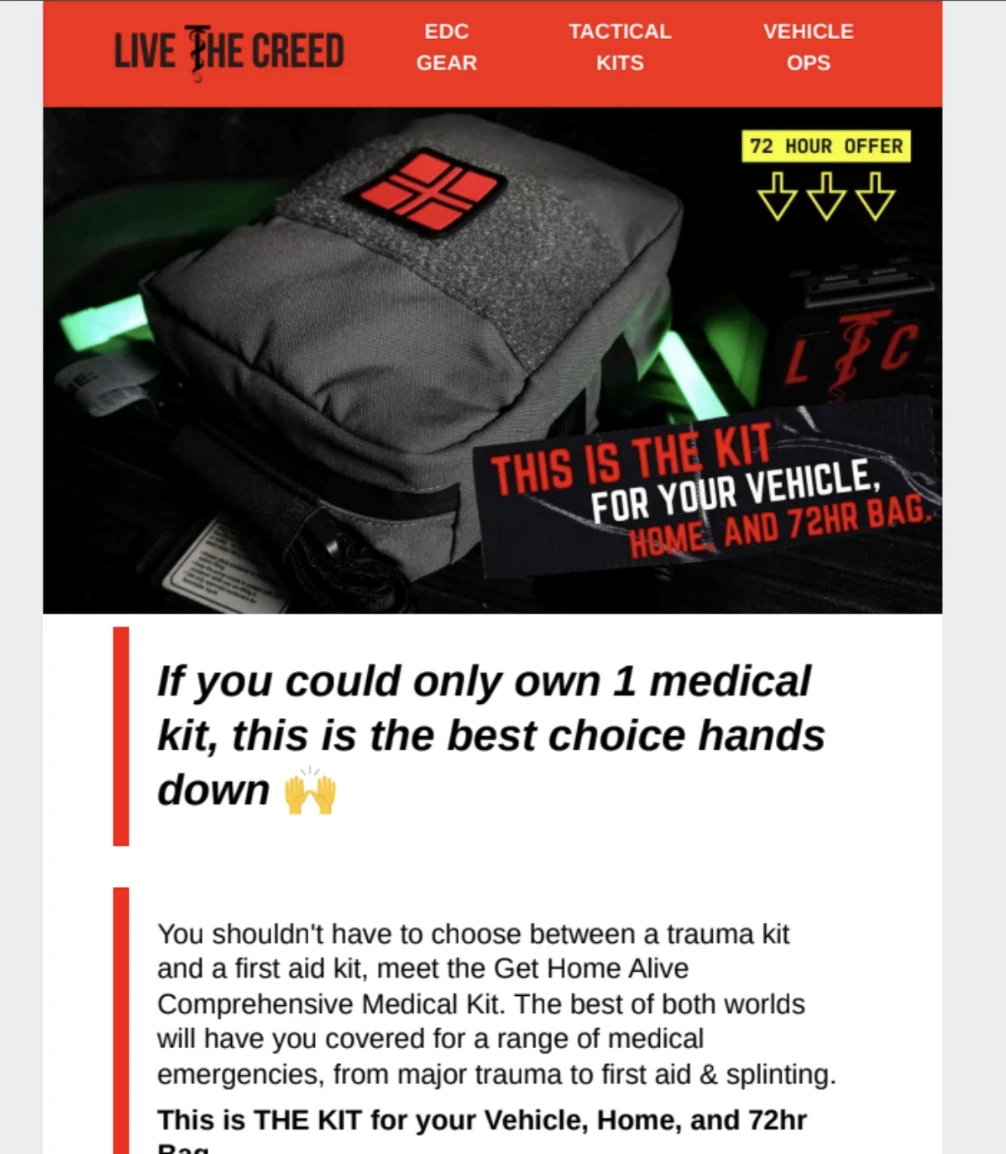
Jonathan Barbera, the Founder of Live The Creed, strategically uses a low-cost, high-value first aid kit to attract new customers.
Once a purchase is made, Jonathan leverages MailerLite's Buys specific product automation trigger to streamline his upselling efforts. This automatically sends follow-up emails to new customers that feature higher-priced, complementary items, such as larger first aid kits designed for cars.
As well as these automated emails, he also sends regular newsletter campaigns with offers, limited edition product releases and case studies.
When you pay high acquisition costs through Instagram ads you’re not making much money on the first sale. Collecting email addresses lets you increase the average value of the customer over time as you communicate with them via email.
This communication is important as it lets him add value to the customer experience through helpful tips and content, strengthening brand loyalty and increasing the likelihood of repeat purchases. The 2025 State of Sales Report by HubSpot shows that providing consistent value has been the top upselling strategy for 39% of the most successful upsellers.
Read Jonathan’s case study here:
Learn how to design captivating emails for your upselling campaigns in this helpful guide:
Automation
Email automation is excellent for upselling, cross-selling and delivering premium digital products. The beauty of automation is once you set it up, it does most of the hard work for you.
With email automation, you can send triggered emails based on an action performed by your subscribers.
So if a subscriber joins a specific interest group, you can automatically promote relevant products using automation.
When paired with an e-commerce integration, using Shopify or WooCommerce, you can even send triggered emails when a subscriber purchases a specific product.
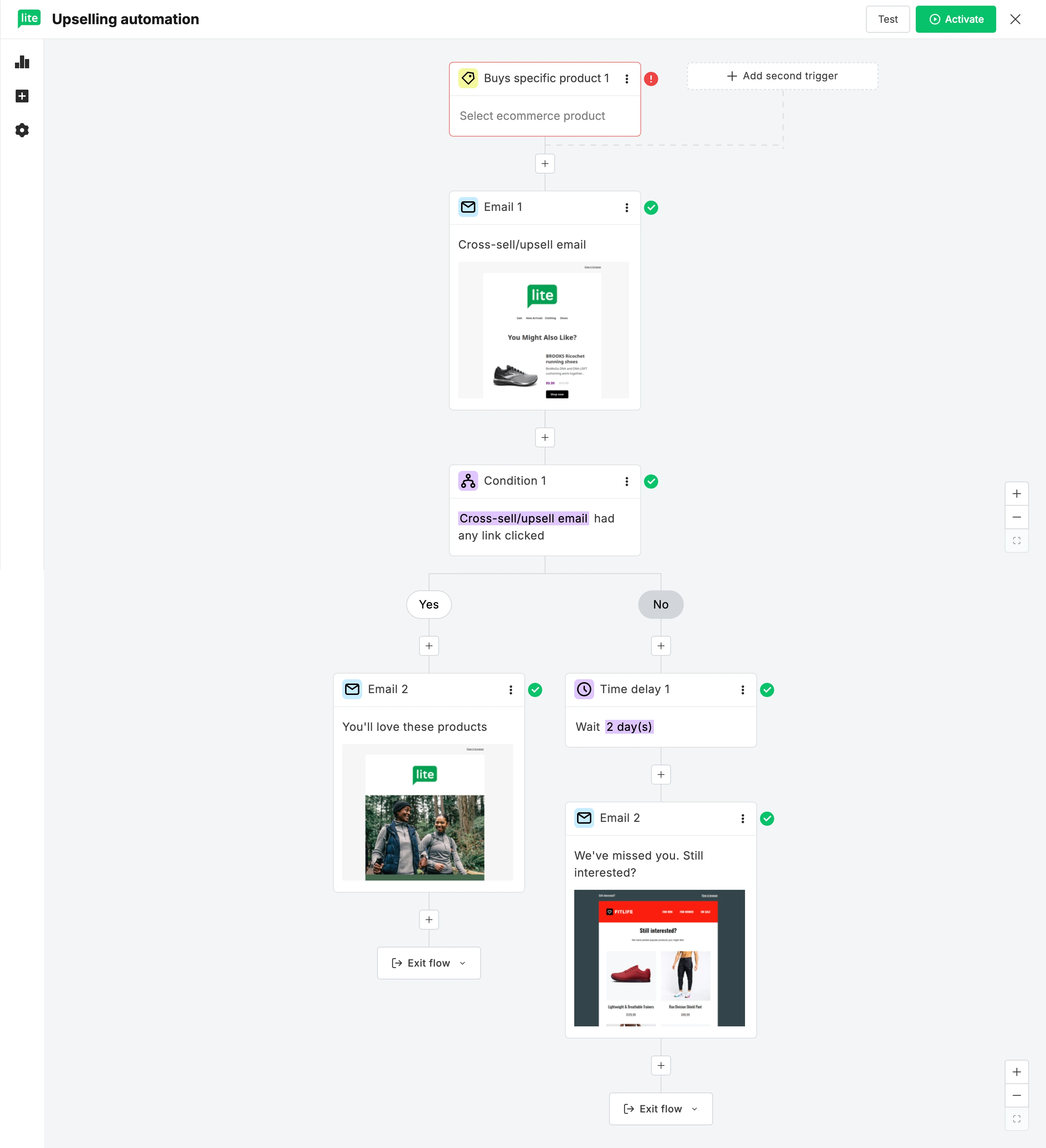
Learn how to build this upselling or cross-selling workflow with this automation example:
Websites and landing pages
MailerLite makes it super easy to sell digital products online using websites and landing pages, which can be a fulfilling way to earn a passive income online.
Use our drag & drop builders to create a website or landing page in minutes. Then add a one-time or recurring purchase digital product block to sell digital products, bundles and subscriptions or memberships.
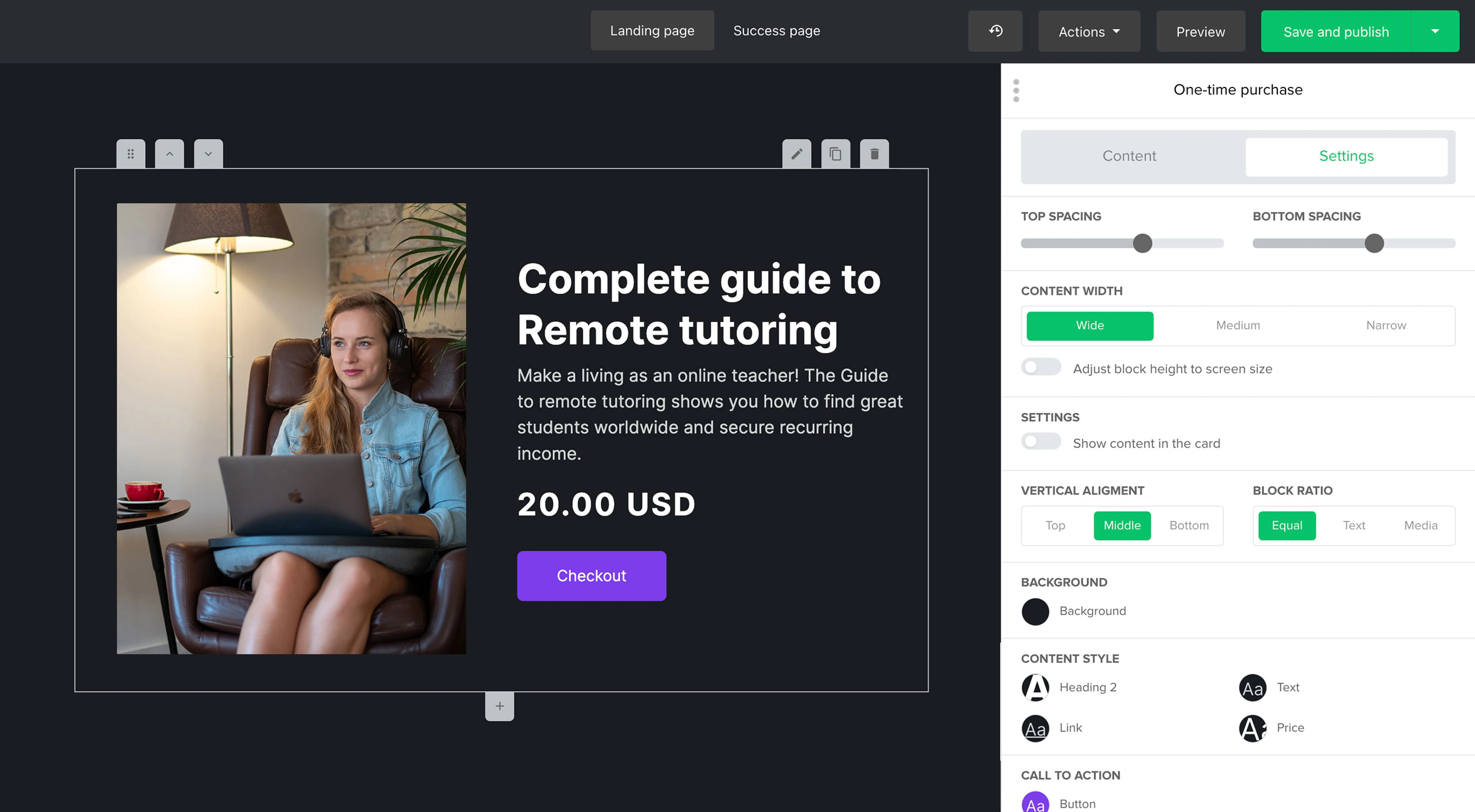
Then, with the help of email automation, you can advertise, upsell and deliver digital products or subscriptions all in one place!
Learn more about selling digital products and subscriptions using MailerLite in this article:
Best practices for a successful upselling strategy
1. Keep it relevant
The most important thing to remember when upselling is to make sure that you are actually offering a relevant product—something your customer needs or wants.
If you target your upsell offer to the right people, they will probably benefit from the message. And if they’re not interested, they won’t be surprised or taken off-guard by the upsell.
Let’s consider another example with our good car salesperson: A young family walks into the dealership looking for a car. The salesperson could push them to buy a fancy new car with a “sports package” and Italian leather seats to jack up his commission. But a good car salesperson would focus on their needs and only upsell according to things like trunk size and safety features in anticipation of a growing family.
According to Hubspot’s 2025 State of Sales Report, 42% of sales professionals stated that understanding their customers' goals and needs was their most effective upselling strategy.
Tip to strengthen relevance: Use groups and segments in MailerLite to target subscribers based on their interests and/or behavior. You can then use features like dynamic content and promotion pop-ups to display certain upsell offers exclusively to specific subscribers.
2. Cap pricing margins
You don’t want to come across as greedy when you upsell, which is why it’s important to have a maximum price margin. This will ensure that your customers feel like they are getting a good deal–and not being taken for a ride.
A general rule of thumb is to keep your upsells within 20% of the original purchase price. So, if someone buys a product for $100, you wouldn’t want to upsell them to something that costs more than $120.
Of course, there will always be exceptions to this rule. If you’re selling higher-end products or services, your customers will probably be expecting to pay more for upgrades.
Let’s take the Oura ring as an example. When purchasing the ring on the Oura website, the price margin between the Heritage style and the Horizon style is 21.3%. Even though it’s a higher ticket item, it follows the general guide of keeping to around a 20% price margin.
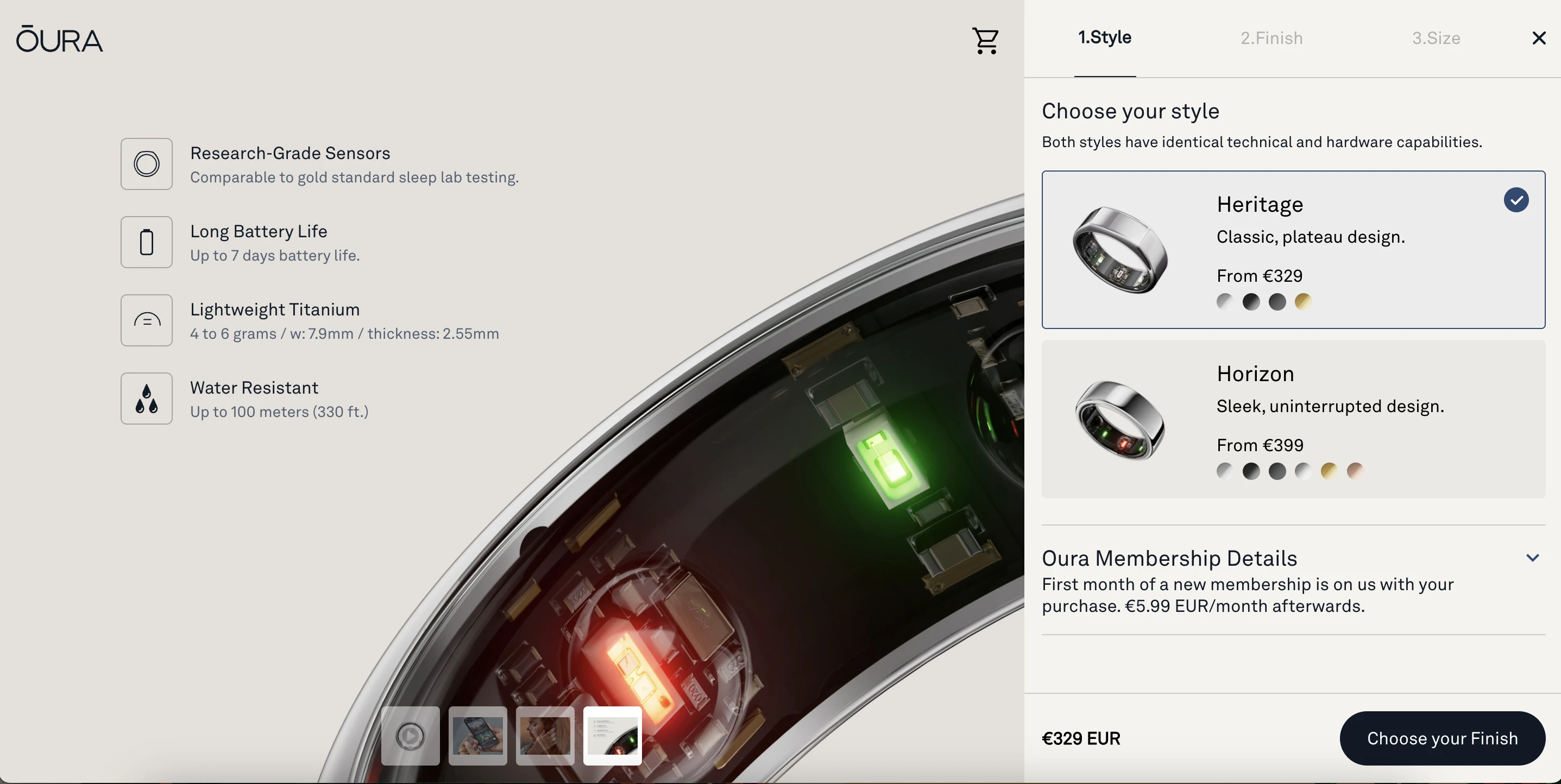
If a 20% margin doesn’t work for your upsell offer, take a leaf out of IPSY’s book and outline exactly how amazing the added value is compared to the price increase.
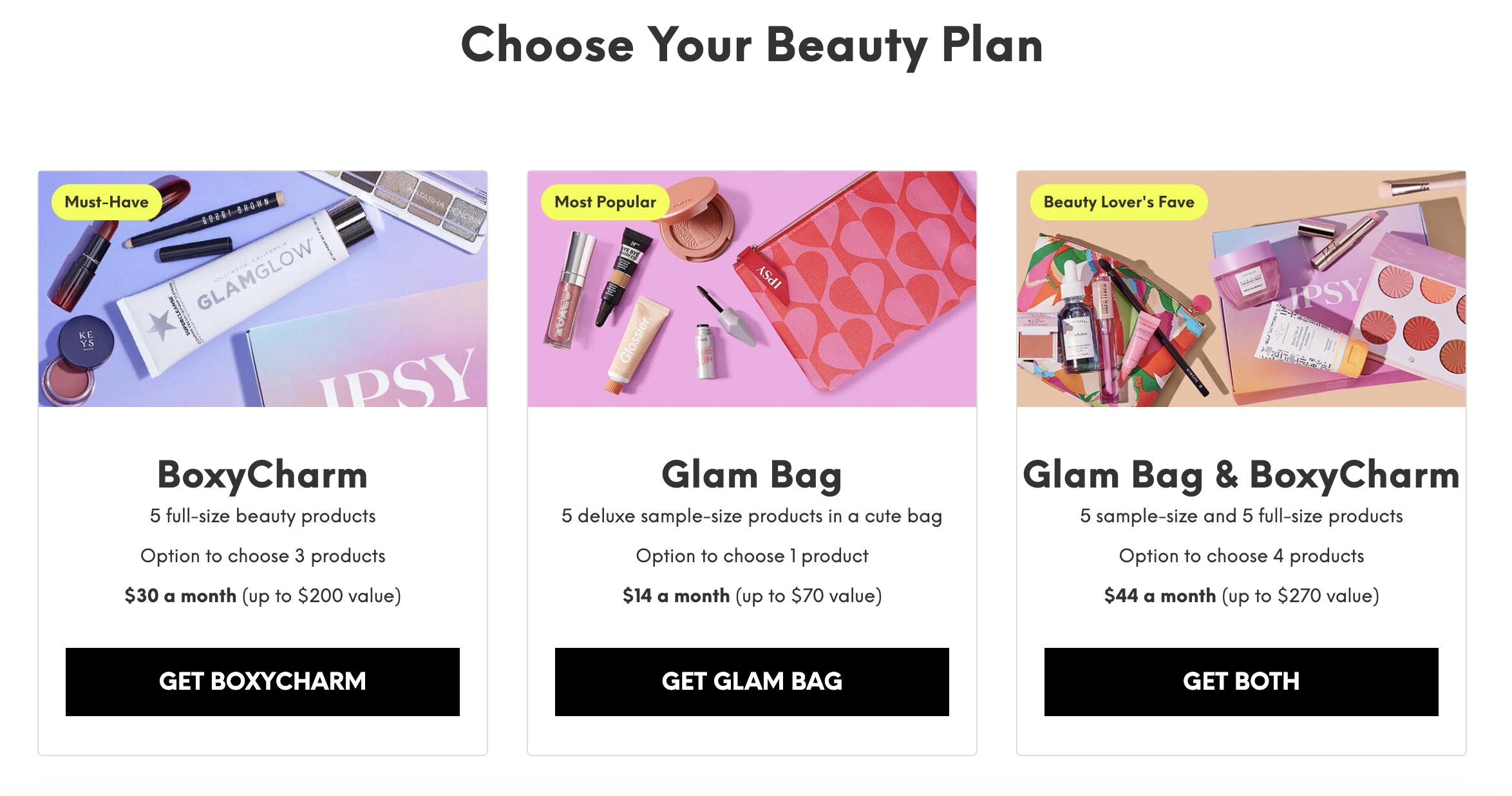
3. Use urgency sparingly
If you can create a sense of urgency around an upsell, you’ll be more likely to convert customers. This could be done by offering a discount for upgrading within a certain time frame or stressing the importance of the additional product. However, this tactic should be used sparingly, or your customers may start to feel like they’re being pressured into buying something they don’t want.
A simple way to generate urgency is to include countdown timers in your promotional content or on your website.
Learn more about using countdown timers in this article:
4. Leverage social proof
Social proof is a psychological phenomenon where people are more likely to do something if they see other people doing it. You can use this to your advantage when upselling by incorporating customer testimonials or reviews into your offer.
Amazon uses social proof all over its platform. Beyond reviews and testimonials, they litter each page with product recommendations and display user star-ratings.

When new customers see that other people have had success with your upsells, they’ll be more likely to take the plunge themselves.
5. Be transparent about price comparisons
When you’re upselling, be transparent about the pricing of your different offers. The goal is not to try and “trick” people into spending more money, but to be honest about the pricing breakdown and benefits of your offers and let customers make an informed decision about whether or not they want to take you up on it.
Take the MailerLite pricing page for example. In one glance you can easily review the different prices and compare the value of each plan.
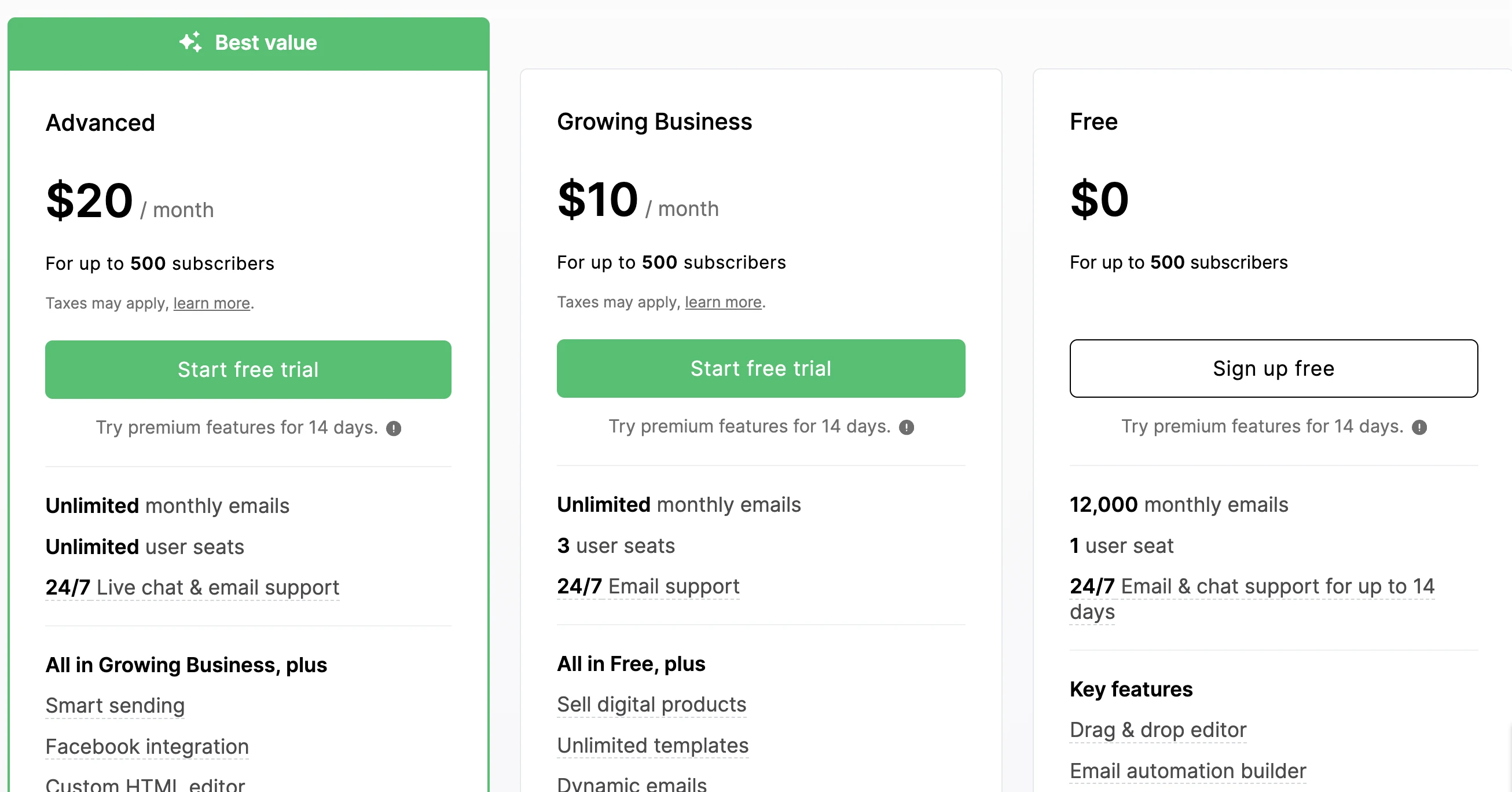
Best upselling plugins to nail the sale
If you’re using Shopify or WooCommerce, there are numerous plugins you can add to your e-commerce store to make upselling a part of your strategy. Here are some of the most popular.
Shopify plugins for upselling
Shopify Bundles
Shopify Bundles is a free plugin that enables upselling by allowing you to easily create product bundles and multipacks from the Shopify admin. You can add various options to the bundles, enabling customers to customize attributes such as color, size or design.
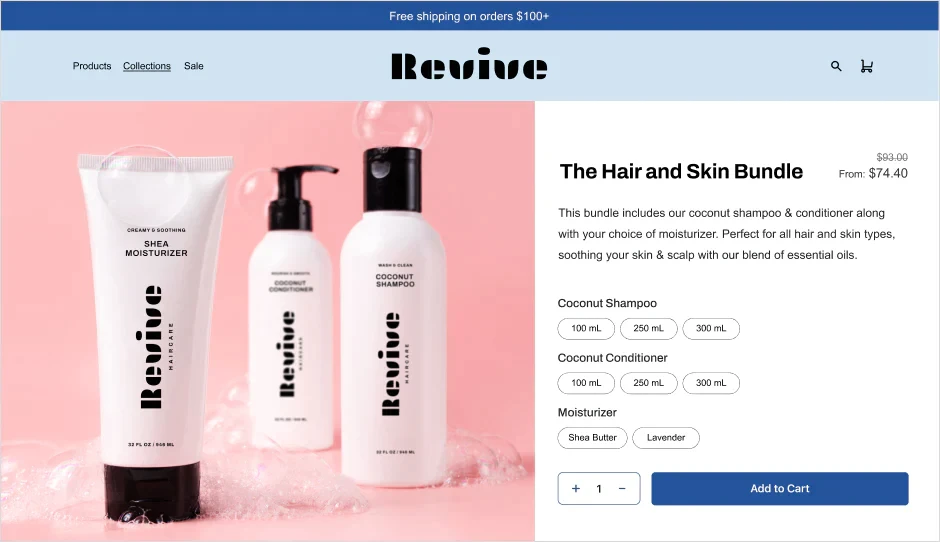
Selleasy Upsell & Cross Sell
This plugin by Selleasy offers options for both upselling and cross-selling. It allows you to create and display “Frequently bought together” product bundles, upsell pop-ups based on items in the cart, and post-purchase upsell pages with one-click upsells. It includes a 14-day free trial and has a free plan available.
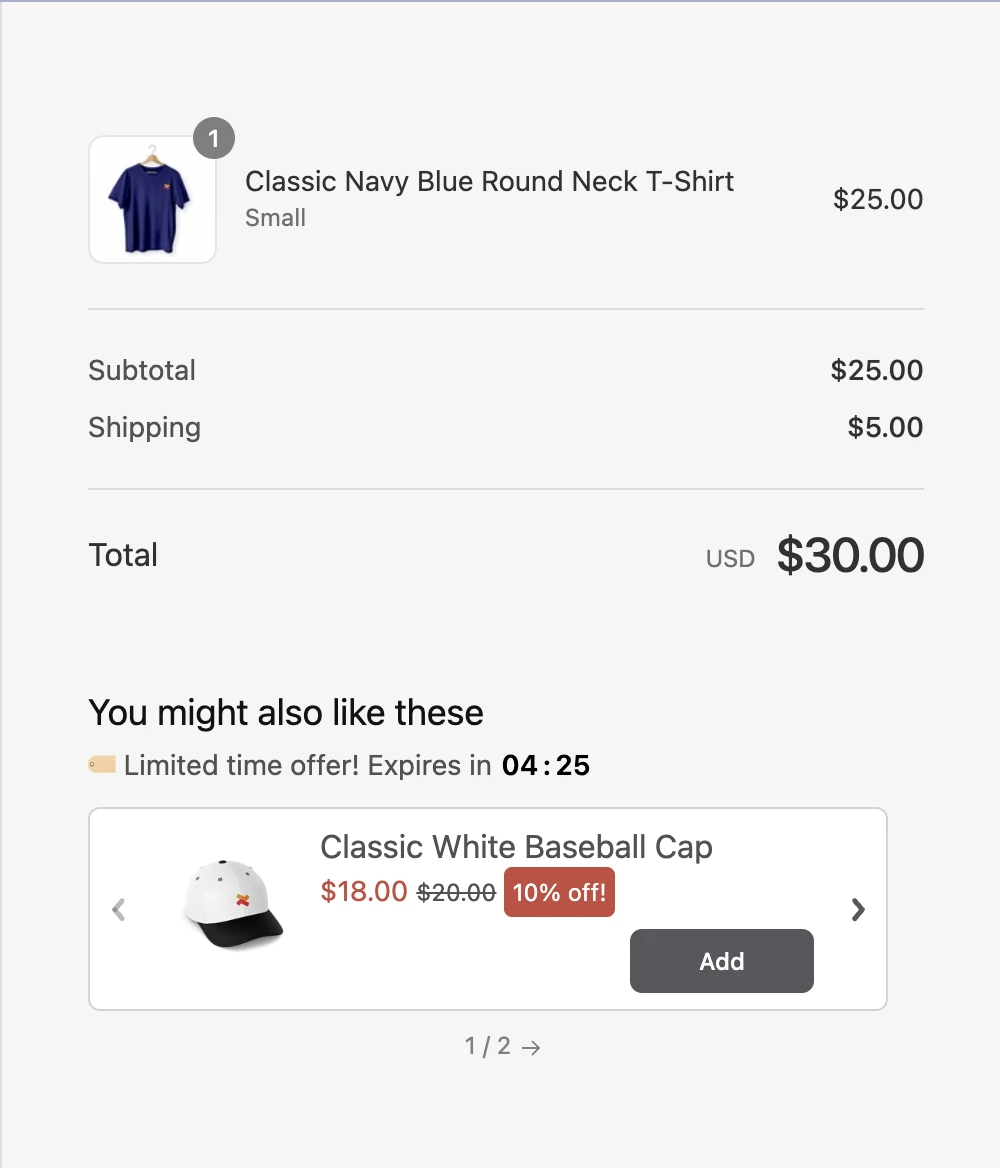
ReConvert Post Purchase Upsell
ReConvert’s dedicated Shopify plugin focuses its features on post-purchase and checkout upsells. You can deploy checkout and post-purchase upsell funnels, boost AOV (Average Order Value with post-checkout blocks and one-click upsells, optimize thank you pages with upsell offers, and more. There is a 14-day free trial and a free plan available.
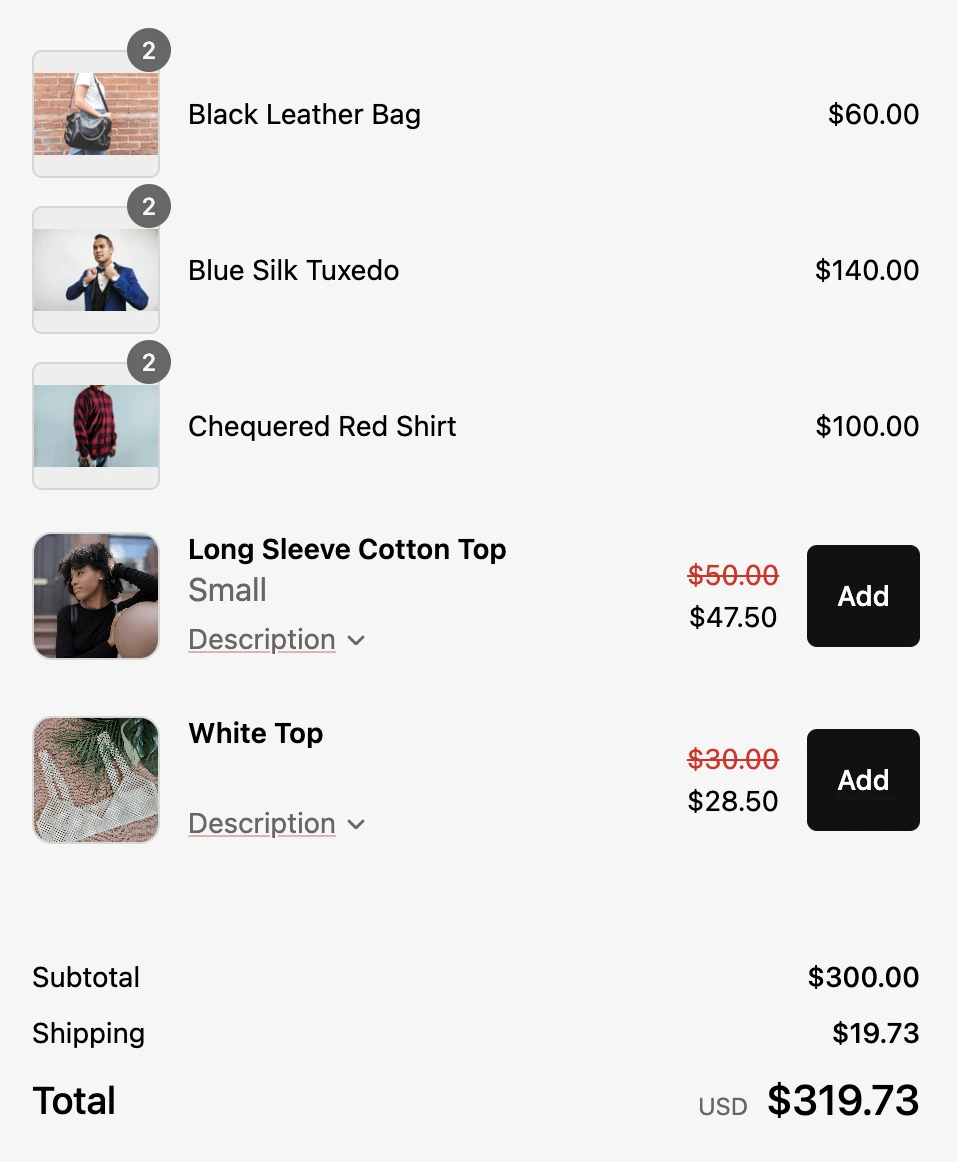
WooCommerce plugins for upselling
WooCommerce Product Add-ons
This official WooCommerce plugin allows you to boost AOV with add-ons such as gift wrapping, special messages, premium materials, engraving, and more.
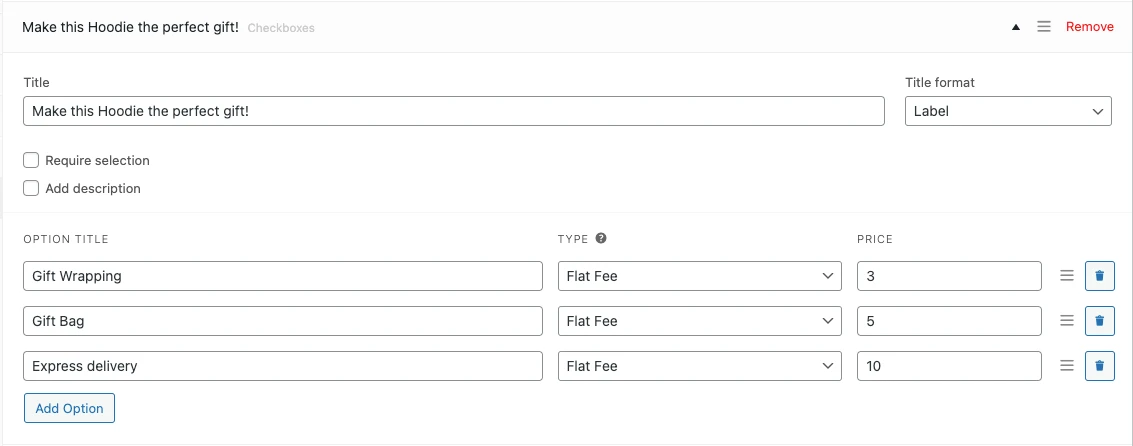
WooCommerce Product Bundles
Similar to Shopify Bundles, this plugin enables shop owners to easily create product bundles and bulk discounted items. It offers various options to group simple, variable and subscription items together, so you can experiment with a range of upsell options on your e-commerce site.
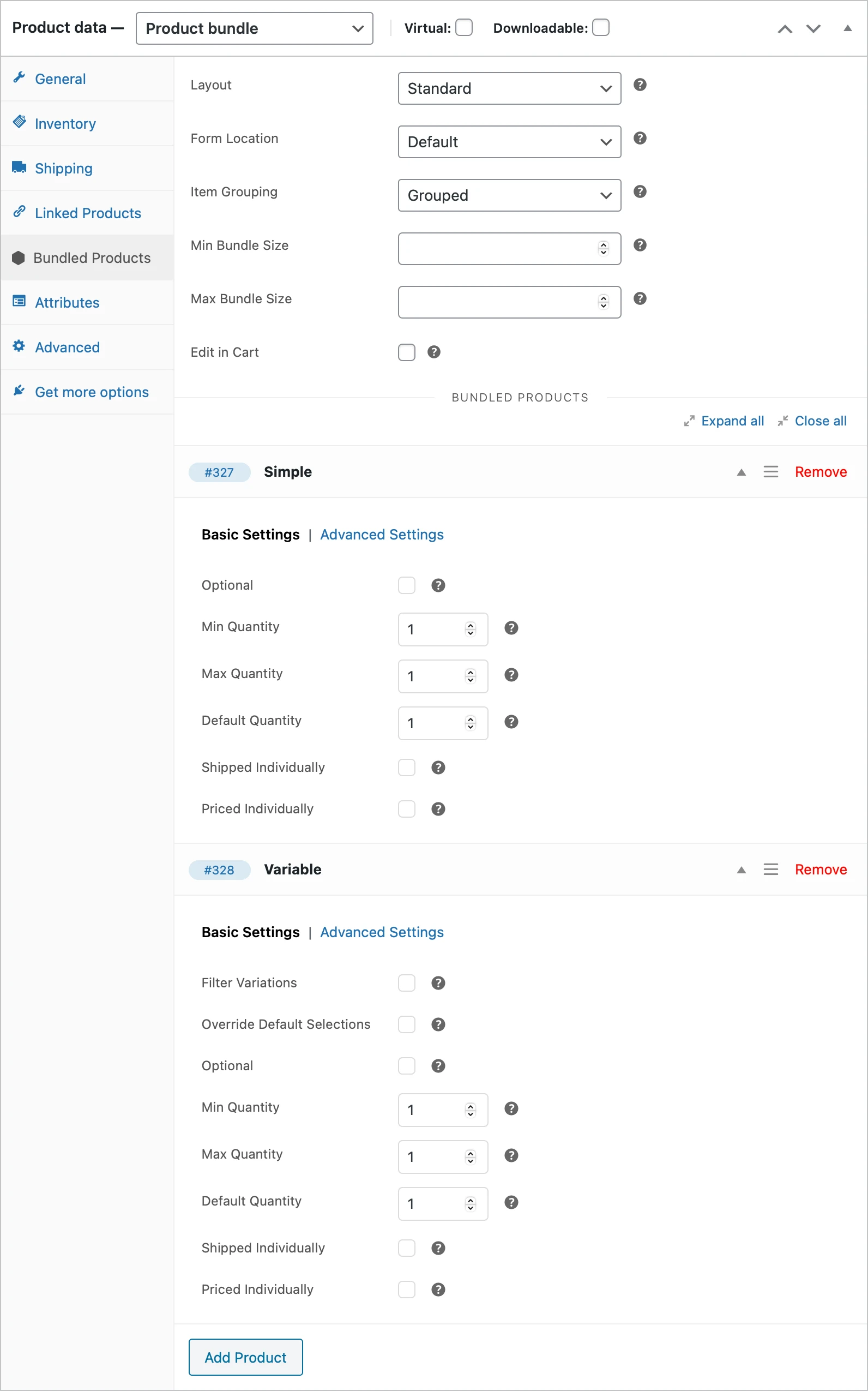
SkyVerge WooCommerce Checkout Add-ons
This plugin enables you to get those last-minute add-ons in at the checkout. You can easily offer shipping insurance, express shipping options, gift-wrapping, special messages, and more with one-click upsells.

Be a good car salesperson
Upselling can be used to increase revenue and provide more value to your customers—but you don’t want to go overboard with your strategy and come across as pushy.
You don’t have to apply every single technique we outlined to each upsell campaign you undertake. If you want to keep it simple, just remember these key points:
Keep your upsells relevant
Make it easy to say yes
Keep the price jump to a max 20% (whenever you can)
Use urgency sparingly
Be transparent (always)
If you follow these key principles, you can successfully upsell while giving off a vibe that says “service with a smile” and not “service with a sly grin”.
